
Design a butterfly garden using colorful blooms like milkweed and coneflowers. These plants offer butterflies the nectar they need to feed.
Include parsley or dill to nourish growing caterpillars. Create paths for easy access in your garden. Hang flowers to maximize space. Select colors such as pink, yellow, and purple. Ensure your garden receives ample sunlight. Avoid using chemicals to protect butterflies. Begin by choosing plants that butterflies adore. What plant will you add to your garden today?
Attract butterflies to your yard with simple actions. Plant native flowers for both food and shelter. Add host plants to support caterpillar development. Design your garden to be both beautiful and functional. Sunlight and care will help it flourish. Try one idea now and observe the butterflies that visit. Your garden can become a vibrant home for these beautiful creatures.

Select native plants rich in nectar, like milkweed, coneflowers, and black-eyed Susans. Choose clusters of single-petal flowers for easy access to nectar. Plant species that bloom at different times of the year to provide continuous sustenance. Focus on bright colors such as purple, pink, and yellow. Avoid pesticides to ensure a safe environment. Host plants like parsley or dill support caterpillars, increasing garden biodiversity.
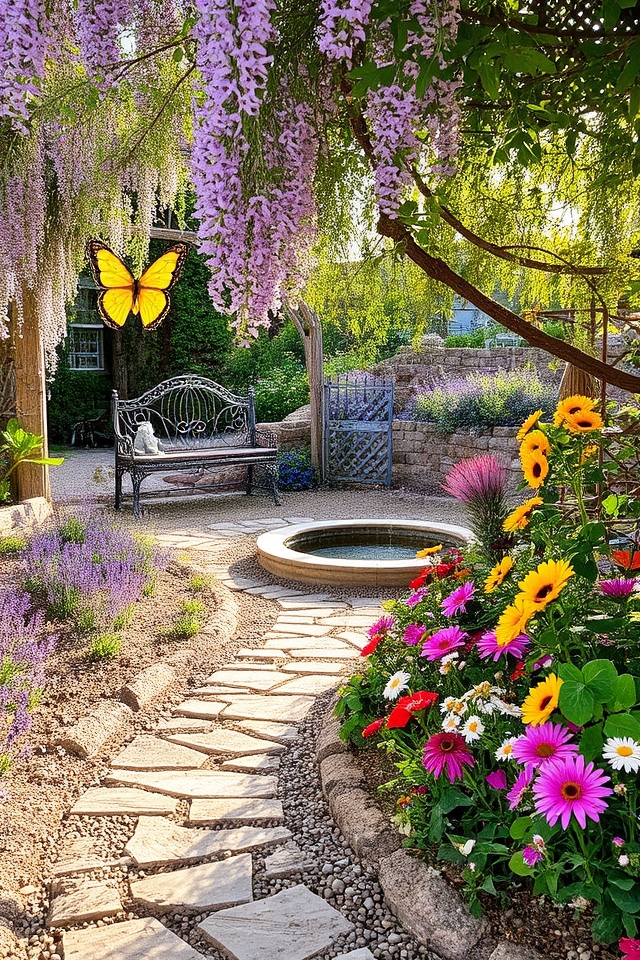
Create a whimsical garden with winding paths, charming sculptures, and layered plantings. Add vibrant, nectar-rich flowers like lavender and coneflowers at varying heights. Include arches covered in climbing vines and cozy seating areas. Use curved lines and playful touches like wind chimes or small fountains to design a magical, butterfly-friendly space. Ensure constant blooms to attract butterflies throughout the seasons.
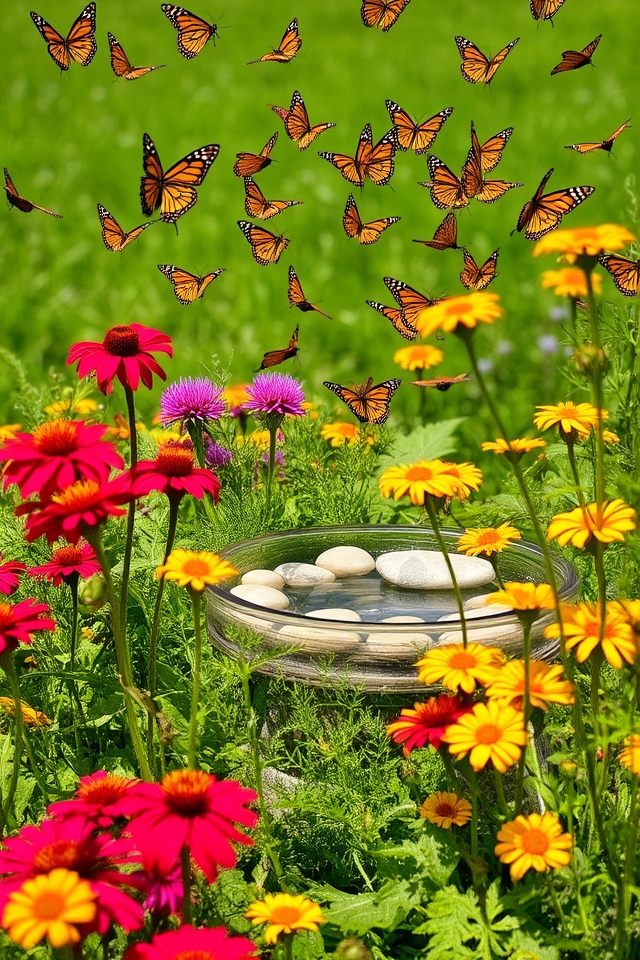
Plant vibrant, nectar-rich plants such as milkweed, coneflowers, and marigolds to draw butterflies. Use a variety of colors—reds, purples, and yellows—to enhance visual appeal. Include caterpillar host plants, like parsley or dill, and plant them in groups for easy access. Avoid pesticides, ensure plenty of sunlight, and provide small water sources. This will create a thriving, colorful habitat for various butterfly species.

Choose host plants that are specific to local butterfly species to support their larvae. Milkweed feeds monarchs, parsley feeds black swallowtails, and passionflower feeds gulf fritillaries. Plant a variety to support different species. Make sure they get enough sunlight and the right soil. Avoid pesticides to protect the larvae. Use native plants for resilience and a balanced ecosystem.
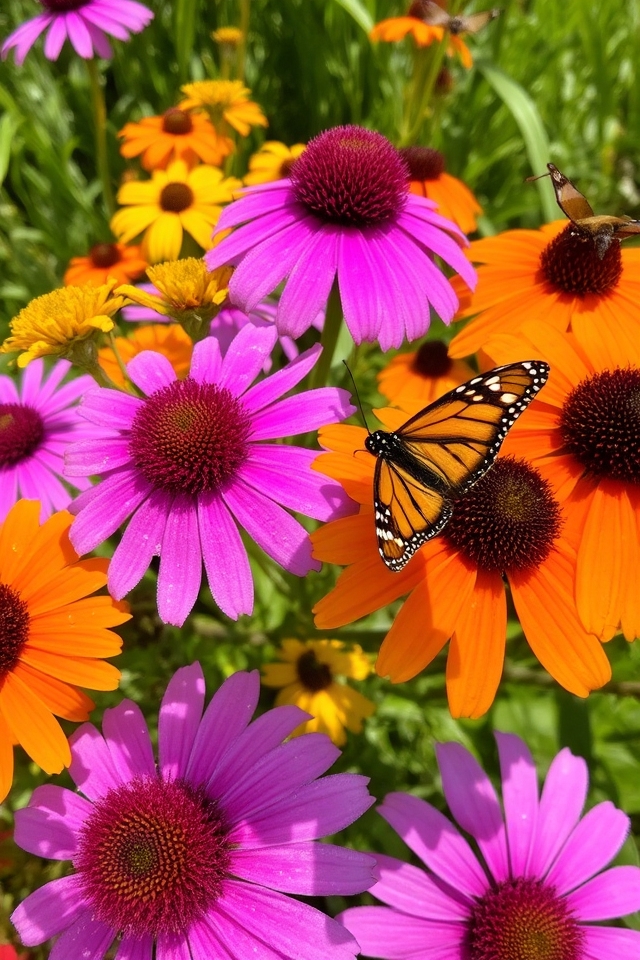
Native plants offer vital nectar and host habitats for local butterflies. They thrive in the regional climate with minimal resources. They support butterfly life cycles by providing food for larvae and nectar for adults. Avoiding non-native species helps maintain ecological balance and reduces pesticide use. Planting milkweed, asters, and coneflowers attracts species like monarchs and swallowtails, promoting biodiversity. This sustains butterfly populations and enhances garden resilience.
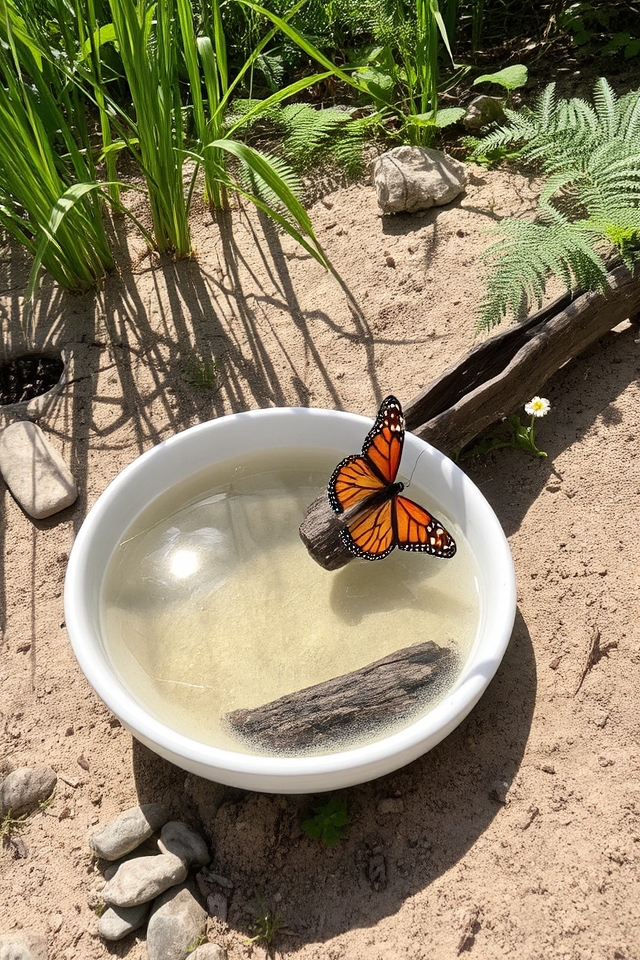
Provide a shallow water source using a dish, tray, or birdbath filled with fresh water. Add pebbles, stones, or floating wood for butterflies to perch on. Keep the water at a depth of 1-2 inches to prevent drowning. Place it in a sunny, protected spot. Change the water regularly to keep it clean. Avoid chemicals; consider adding damp sand nearby for extra moisture.
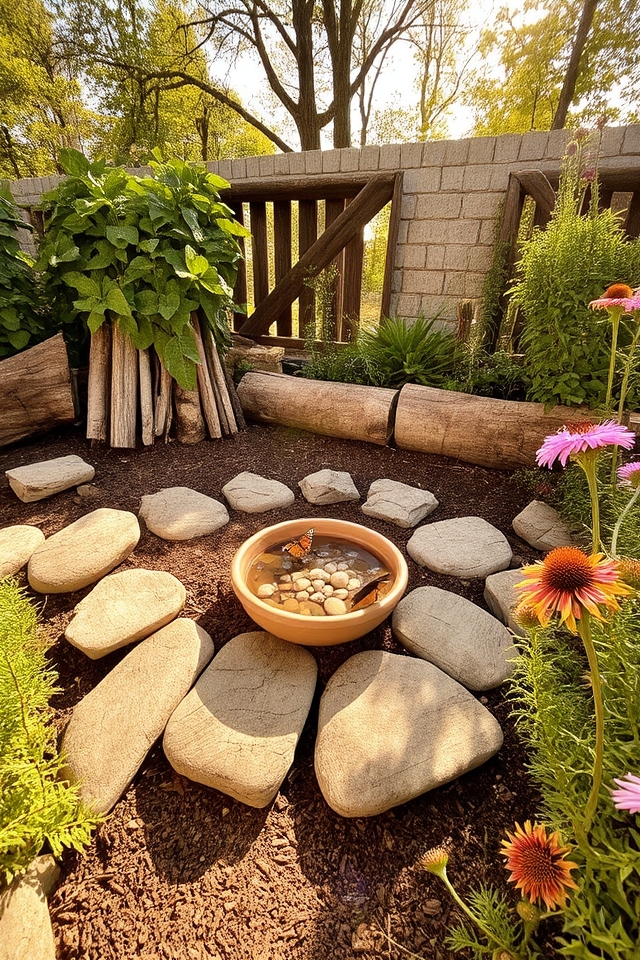
Add shelter and resting areas by placing flat stones, logs, or breeze blocks for butterflies to bask and hide. Use native plants with thick foliage for cover. Include shallow water sources with pebbles for hydration. Arrange these elements to provide shade and protection from the wind, creating safe spaces for resting, mating, and pupating.
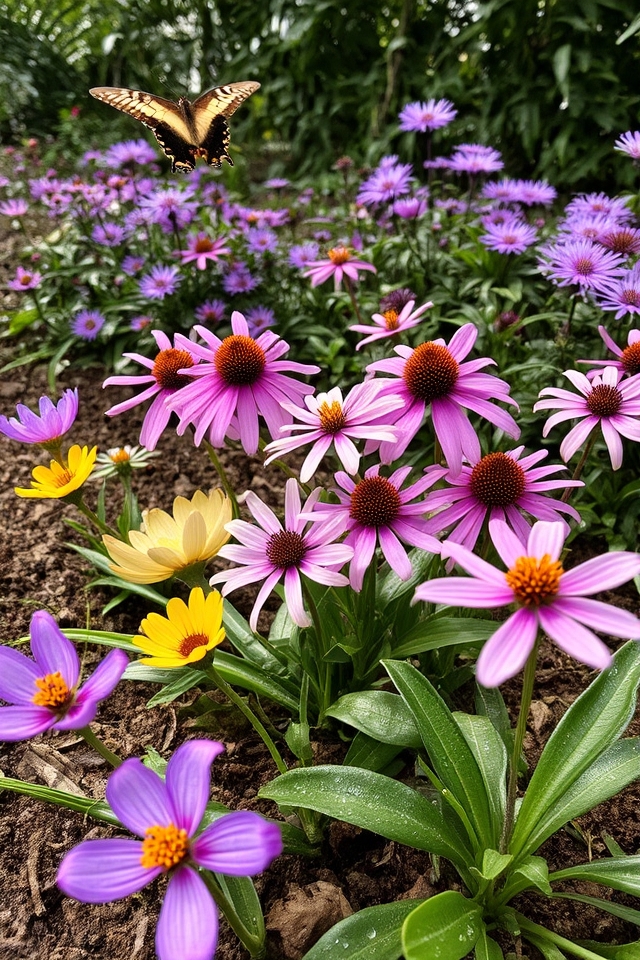
Plan for seasonal blooms by choosing plants that flower at different times, ensuring nectar is available all year. Include early spring flowers like crocus, summer flowers like coneflower, and fall flowers like asters. Select native species to match local butterfly life cycles. Arrange plants by height and bloom time to create a layered habitat. Avoid pesticides to keep the ecosystem balanced. This will support butterflies throughout the year.
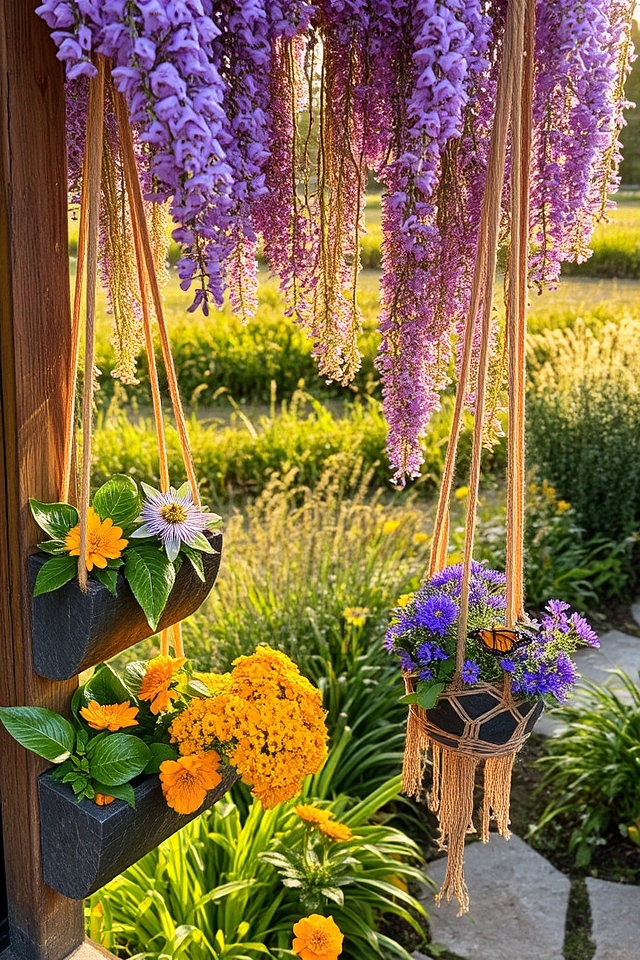
Add vertical garden features like trellises, wall planters, or hanging baskets to maximize space. Use climbing plants such as milkweed, passionflower, or wisteria to provide nectar and host sites for butterflies. Layer heights to create diverse microhabitats, ensuring continuous blooms. Vertical structures enhance visual appeal while supporting pollinators. Choose native, low-maintenance species for sustainability.
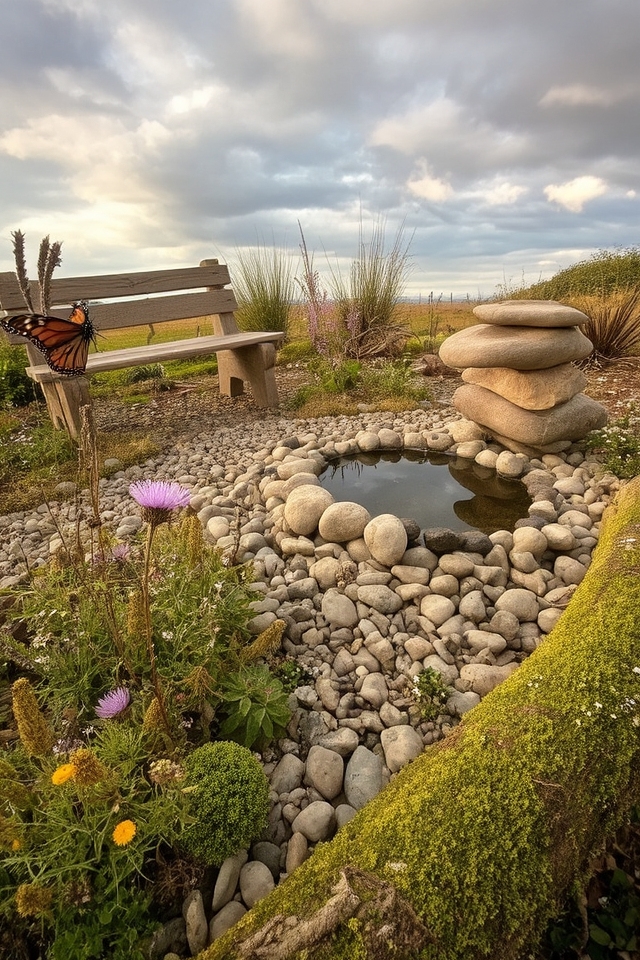
Use natural materials like untreated wood, stones, and dried plants for garden decor. These blend in with the environment, supporting butterfly habitats. Use logs for shelter, pebbles for pathways, and native plants for texture. Avoid synthetic products to maintain ecological balance. Natural finishes and earthy tones enhance visual harmony while promoting biodiversity. This creates a sustainable, welcoming space for pollinators.
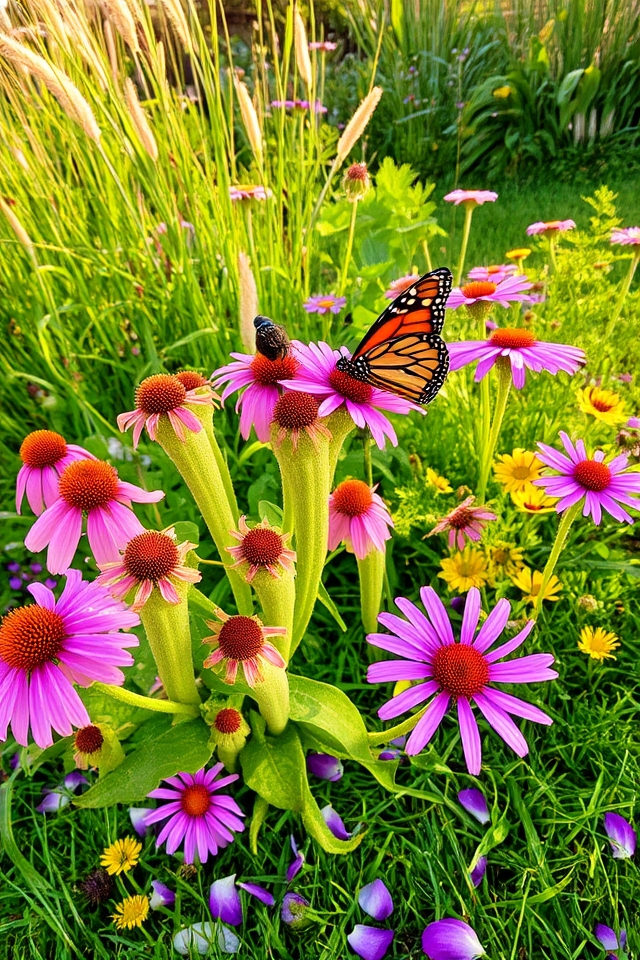
Plant specific host plants for caterpillars, like milkweed for monarchs or parsley for black swallowtails. Include nectar-rich flowers such as coneflowers or asters to attract adult butterflies. Provide sunny, sheltered areas and avoid pesticides. Research local species to tailor your plant choices, ensuring seasonal blooms for continuous attraction.
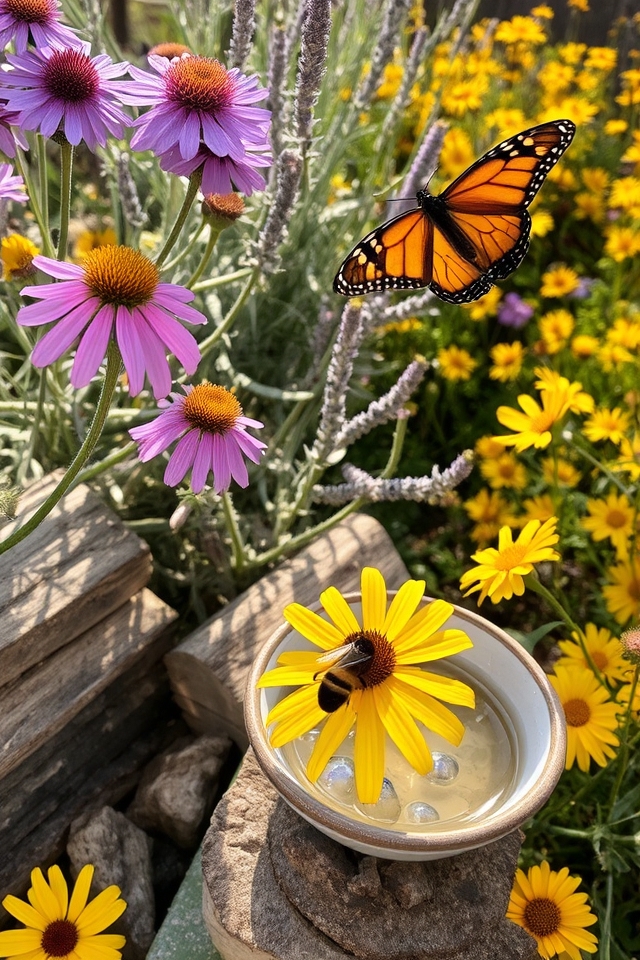
Plant native flowers with different shapes and colors to attract pollinators. Include nectar-rich species like coneflowers and milkweed for butterflies, and lavender or sage for bees. Avoid pesticides; use organic methods. Provide shelter with rocks, logs, or nesting boxes. Add shallow water sources with pebbles for drinking. Maintain continuous blooming from spring to fall for a constant food supply.
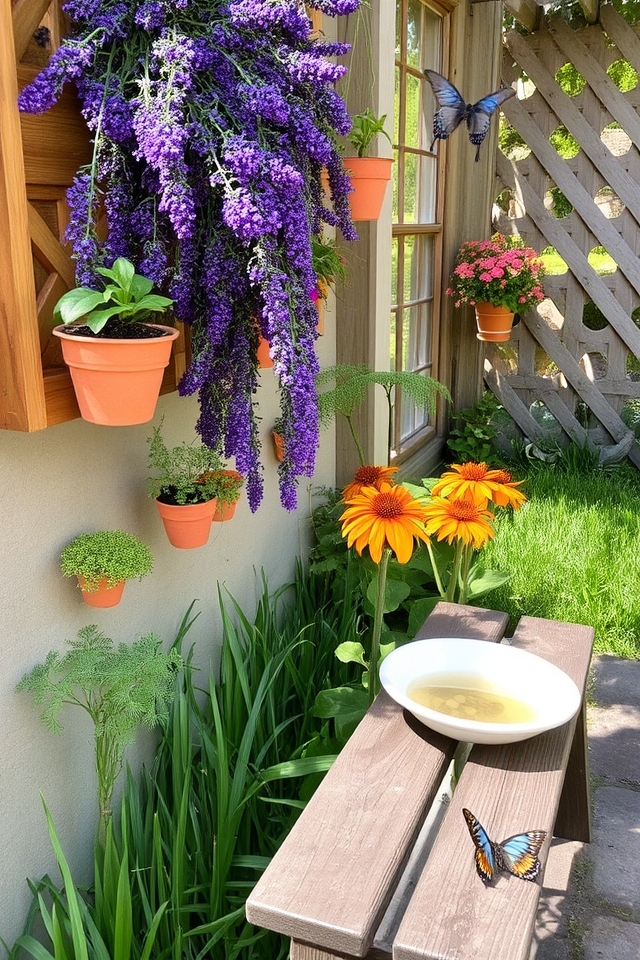
Design a small butterfly garden using vertical space with trellises, hanging planters, or wall-mounted containers. Select native nectar-rich flowers like milkweed, coneflower, and lavender. Include host plants for larvae, such as parsley or dill. Add shallow dishes with water and stones for hydration. Place garden areas in sunny, sheltered spots to attract and support butterflies.
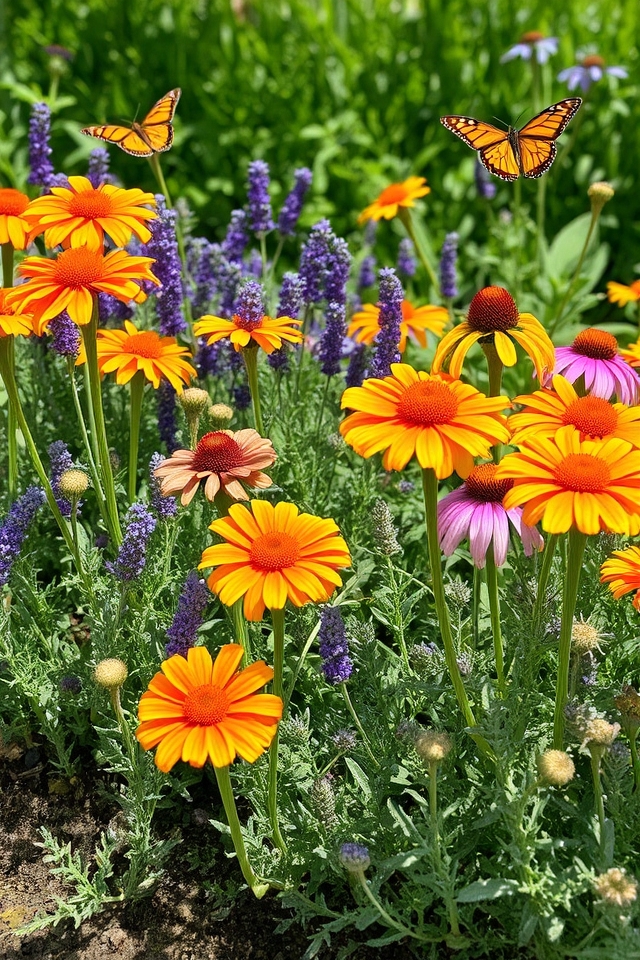
Combine flowers and herbs to attract pollinators and increase biodiversity. Plant herbs like lavender, thyme, or sage alongside flowering plants such as marigolds, sunflowers, or echinacea. This supports butterfly habitats while improving soil health and pest control. Use compact herb varieties near vibrant flowers to maximize space and visual appeal. Companion planting enhances growth and provides both beauty and utility in a unified garden design.
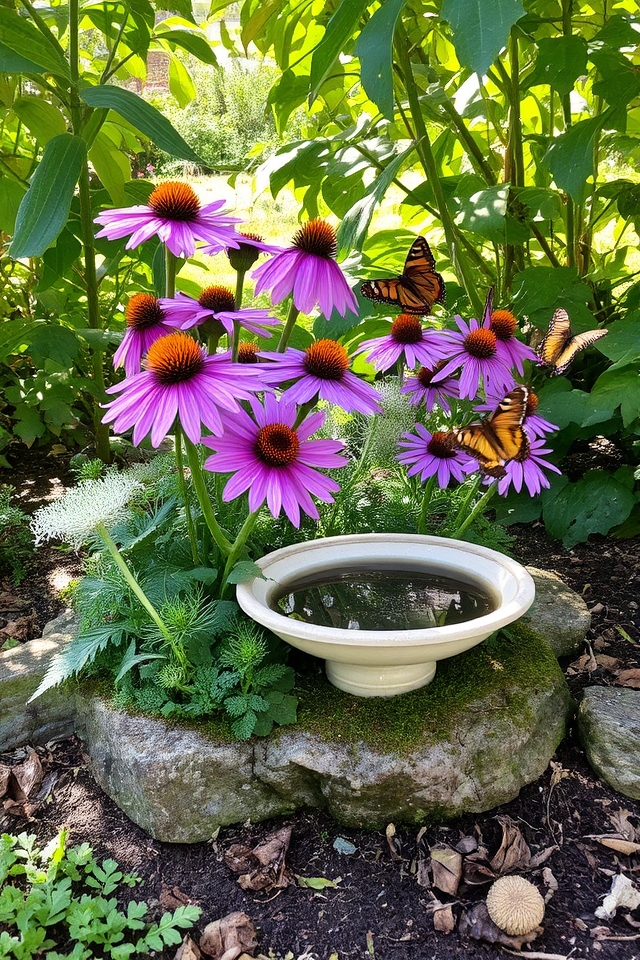
Keep your butterfly habitat thriving by planting native nectar-rich flowers like milkweed, coneflower, and aster to feed adult butterflies. Include host plants for caterpillars, such as parsley or fennel. Provide shallow water sources with pebbles for drinking. Avoid pesticides and synthetic chemicals. Leave leaf litter and undisturbed areas for shelter and overwintering. Regularly prune and refresh plants to maintain continuous blooms and healthy growth.
Your butterfly sanctuary flourishes with milkweed’s vibrant leaves, coneflowers’ bright blooms, and dill’s delicate foliage. Arrange single flowers in flowing patterns, layering purple, pink, and yellow to guide butterflies. Install trellises as flight paths, shallow dishes with pebbles as reflective pools. Prioritize native plants, stagger blooms for year-round sustenance, and use organic methods. Let winding paths and arches frame this living artwork—a haven where every leaf and flower offers nourishment.

Don't let aphids, slugs, and caterpillars ruin another plant. Take back control with simple, natural methods that actually work.